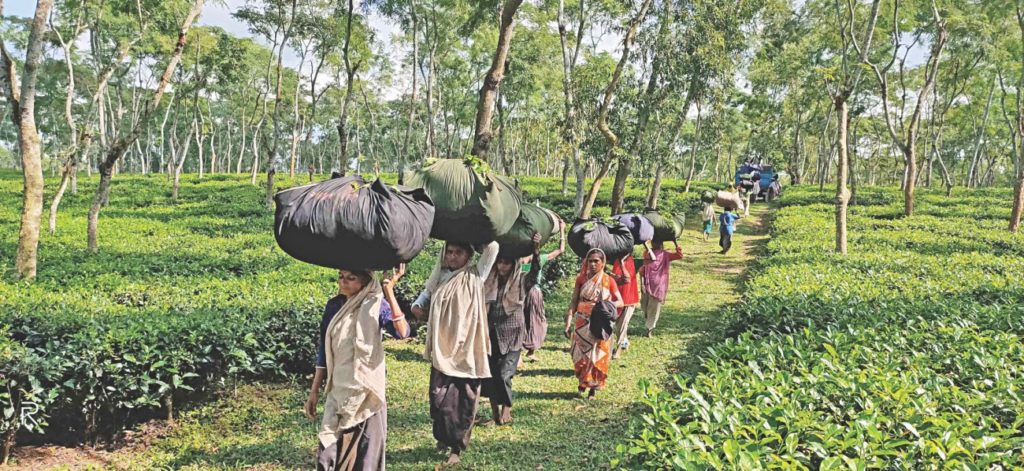Rains give hope for record tea production
Recent rains naturally spelt misery amidst the winter chill but have brought smiles all around for tea production, giving hopes of an early start to the plucking season.
Water gets scarce in winter, especially in the hilly Sylhet division where groundwater levels drop, making extraction difficult even from deep tube wells, and natural streams are reduced to a trickle.
Not all tea plants can bear with this limitation while just around 5 percent of the 166 tea gardens around the country are capable of going for artificial irrigation, which is spraying water using pipes.
While rains in Sylhet in December amounted to 3 mm, way below the 9 mm average, it has already gone past the January average of 9.4 mm to reach 12 mm.
This moisture will be held by the soil for around a month, which producers believe will give rise to early buds and subsequently a week’s head start to the plucking season that runs from March to October.
Moreover, rainwater contains high levels of nitrogen which aids the nitrogenation of the soil while the showers help dislodge any infestation of red spider mites, which feed on the sap and cause leaves to fall off.
This gives rise to possibilities of a continuation of record-breaking production.
Production in 2018 was a two-year high of around 82.13 million kilograms and Bangladesh Tea Board expects the final tally of 2019 to reach around 95 million kilograms.
Another bumper yield will come in 2020, expects Shah Alam, chairman of Bangladeshiyo Cha Sangsad, an organisation of the tea garden owners.
“Plus, if we can get the price as good as last year, we might be able to secure a hefty profit margin,” he added.
Bangladesh exported tea worth $1,470,311 in the July-November period of 2019-20, a 4.26 percent rise from the same period in 2018-19. Moreover, the country’s annual consumption has reached 95.2 million kilograms, as per the tea board.
Hopes also come from a government recommendation for garden owners to increase plantation area by 2.5 percent each year by incorporating unused land, says Mohammad Ali, director of Bangladesh Tea Research Institute.
Tea cultivation first started on a commercial basis in 1854 in Sylhet’s Malinichara tea garden, as per the tea board. Currently around 279,439 acres of land are under cultivation.
Of the gardens, 91 are in Moulvibazar, 25 in Habiganj, 19 in Sylhet, 22 in Chattogram, seven in Panchagarh, two in Rangamati and one in Thakurgaon.









